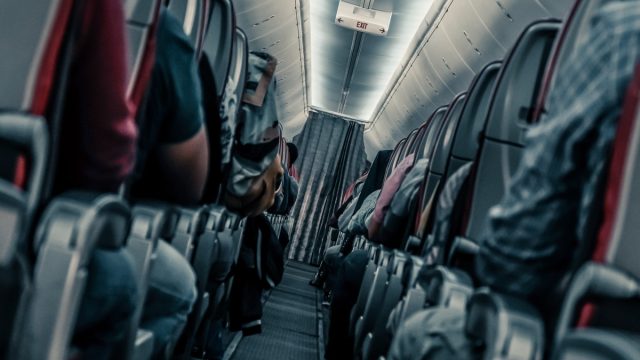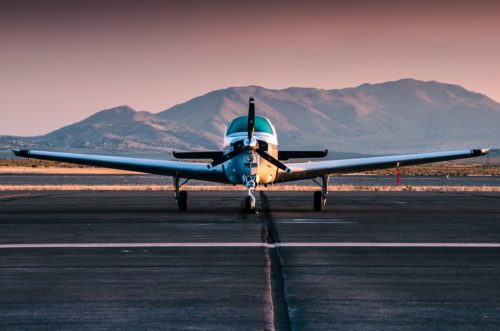Scary Flight Turbulence Could Be Reduced by 80% by This New Startup
An Austrian company has patented its "Turbulence Cancelling" technology in the U.S.

Frustrating airport antics don't end once you board the plane. You also worry if your seatmate will follow proper etiquette and whether there will be enough room for your carry-on. From there, all you can do is hope it's smooth sailing. But there's one more obstacle you could encounter: turbulence. A shaky plane is thought to be a cause of aerophobia—fear of flying—and if you've ever had a bumpy flight, you know that it can be more than a little scary and even cause motion sickness. The idea that this trigger could be drastically reduced is certainly an appealing one, and as a matter of fact, one startup thinks they have a solution. Read on to find out how a new tech company hopes to tackle turbulence.
RELATED: Unfair Perks: Plane Passenger Shows How Extreme Turbulence Hits Different in First Class.
A new startup says current solutions for turbulence are "insufficient."

According to Travel + Leisure bumpy rides are caused when the wind flow on which the plane is travelling becomes choppy. These "eddies of rough air," are caused by different interferences in the atmosphere, with climate change making matters a bit worse.
While airflow and weather are out of our control, Turbulence Solutions, an Austrian aerospace engineering startup, argues that there should be better methods for navigating turbulence. On its website, the company claims "existing solutions" for doing so are "insufficient."
For example, when large aircraft encounter turbulence, they often try to avoid it by flying over or under, flying slowly through, or even changing the route to fly around it. This requires more fuel, increasing carbon dioxide emissions by extension.
RELATED: TSA Issues New Alert on What You Can't Bring Through Security.
The company developed "Turbulence Cancelling" technology.
In a now-viral clip posted on X by Turbulence Solutions project manager Yves Remmler, the company shows off its tech solution, which is appropriately called "Turbulence Cancelling." In the video, when the Turbulence Cancelling tech is switched off, you can see a plane moving up and down and side to side. When it's on, the ride appears much smoother.
According to Turbulence Solutions' website, the current technology is able to reduce turbulence loads felt by passengers by over 80 percent.
RELATED: Major Airlines, Including JetBlue and American, Are Changing Seating.
Here's how it works.

To mitigate turbulence, the company attaches rods loaded with sensors to the plane's wings, which measure differences in air pressure along the plane, then adjusts the wings to accommodate for choppiness, The Messenger reported.
"The air pressure gets measured differentially and by that we can read the direction of the airflow, basically, and from the direction of the airflow, we can predict what direction the turbulence will be as well as the magnitude of the turbulence," Remmler told The Messenger. "From that, we can directly calculate deflection in the equal and opposite direction."
To put it simply, The Messenger compared the technology to how a bird's feathers can stabilize them while in the air.
RELATED: 10 Clothing Items You Shouldn't Wear on a Plane.
It will take some time for this technology to smooth out commercial flights.

The company has patented the Turbulence Cancelling technology in the U.S., gathering in-flight data via a 2021 test on board a "crewed demonstrator aircraft," Flying reported. And as Andras Galffy, founder, CEO, and head of technology for Turbulence Solutions, told the outlet, the tech will initially be integrated into smaller planes, like general aviation aircraft (non-commercial, civilian flights).
So, while turbulence-free travel may sound like truly fantastic news, don't get too excited just yet. Per Remmler's estimations, it could take as long as a decade for this tech to arrive on larger planes, The Messenger reported.
"Right now, it's just a nice add-on for light sport aircraft, but in the long term, we want to make it feel safer and more resilient so that you can actually try and fly through heavier turbulences without having to worry," he told the outlet.
RELATED: For more up-to-date information, sign up for our daily newsletter.





















